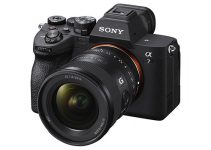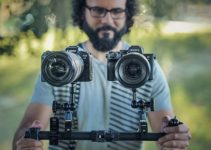Needless to say, 3-axis brushless gimbals are wonderful stabilizing tools capable of producing amazing footage that can add tons of production value to any project.
However, the fact that you own a gimbal doesn’t necessarily mean you should through away all your good old and well-trusted filmmaking tools such as sliders, jib cranes or dollies and lock them in the basement forever. Even though most gimbals can perform plenty of the same shots, they just can’t replicate the accuracy of the movement of their predecessors.
For instance, your slider is locked to a single axis, and it’s very precise, especially when it comes to performing repeatable movements, something that you hardly could achieve only with a gimbal.
The following two-part video produced by Aputure will give you eight more useful tips on the topic that can help you take your production to the next level safely and more efficiently.
All in all, gimbals can deliver exceptional performance when it comes to free motion as they are not tight down like a dolly or a jib crane. You can have some crazy combinations of popular camera movements that were impossible to pull off even a few years back only with a single tool. This is where 3-axis stabilizers simply shine as they offer unique creative movements that can undoubtedly add more kinetic energy and vibe to almost any static shot. Your job as a gimbal operator is to take advantage of this essential perk. Be careful, though, as with the variety of countless motions comes the next serious challenge – finding the right motivation of each camera movement.
In other words, unless you’re using a particular camera movement to communicate your story better, there is no actual reason to have it at all in your production. There is a good reason why knowing the exact motive for moving your camera in the first place is paramount for visual storytelling in general. Shooting with a gimbal isn’t an exception to this rule. Moreover, cool moving shots can sometimes even harm your production so be extremely careful how and why you’re using them.
It may sound obvious, but when flying a gimbal always watch out for the vertical movement. It’s the Achilles heel of most 3-axis stabilizers so be aware of this flaw the next time you’re using such tool. Another tip is to try utilizing different angles with your gimbal. Use the invert mode (if it’s available) while experimenting with a few different perspectives and see how these work for your project.
Furthermore, always be careful not to hurt your body as your health is above all. Gimbal operation for extensive periods of time can be extremely challenging and overwhelming process, especially for yourself so make sure you take all precautions to avoid any health injuries and further complications. Just keep the proper balance and try to eliminate the fatigue in your arms and shoulders as much as you can. Utilizing a supporting system can also vastly help by taking the strain off your body.
Last but not least, use your gimbal only when necessary. As a gimbal operator, plan your shots carefully upfront and make sure that you have enough physical strengths to carry the gimbal through the entire shooting day. Careful planning can facilitate your job on set significantly. As bonus tips, always attach an external monitor to the grip of your gimbal to be able to frame your shots properly and make sure that you have the option to pull focus wirelessly for best results.
[source: Aputure]
Disclaimer: As an Amazon Associate partner and participant in B&H and Adorama Affiliate programmes, we earn a small comission from each purchase made through the affiliate links listed above at no additional cost to you.
Claim your copy of DAVINCI RESOLVE - SIMPLIFIED COURSE with 50% off! Get Instant Access!





